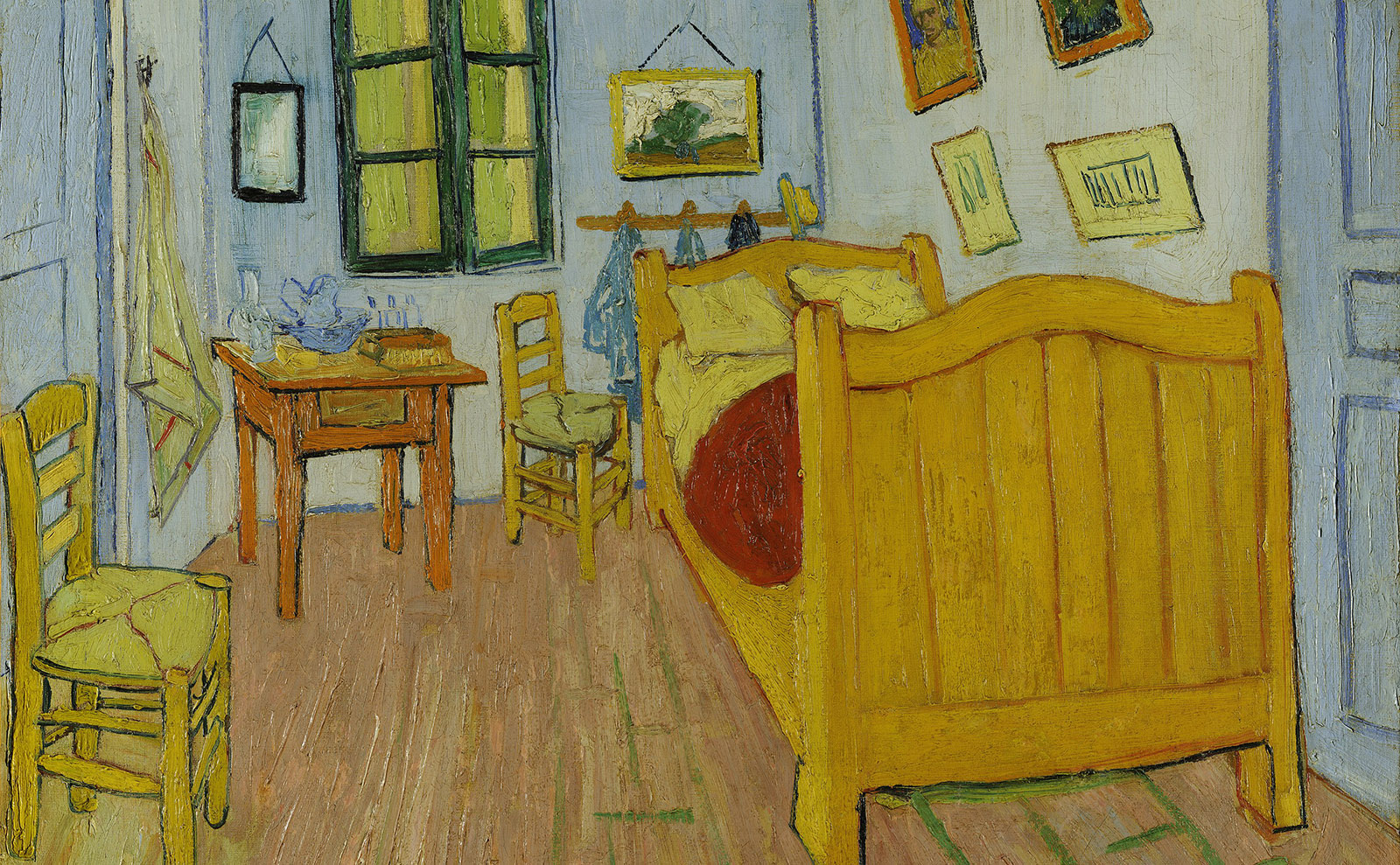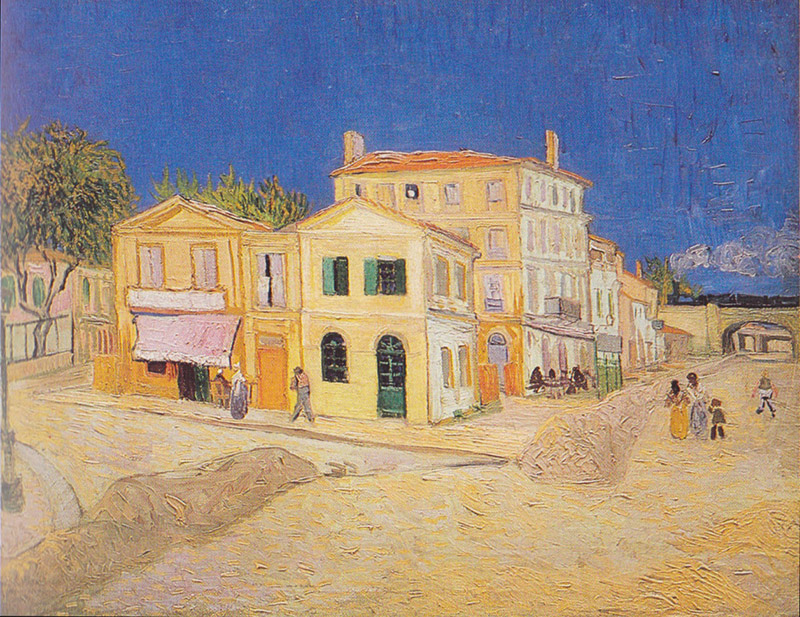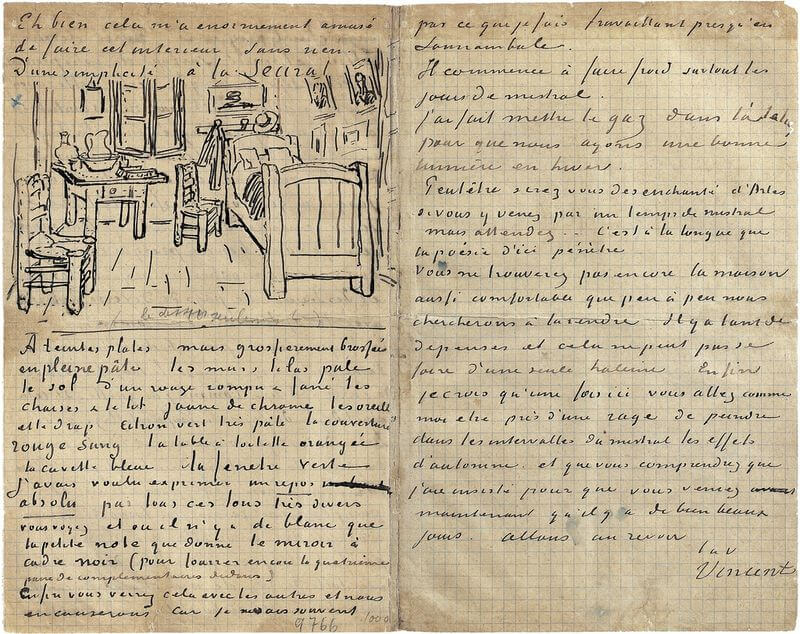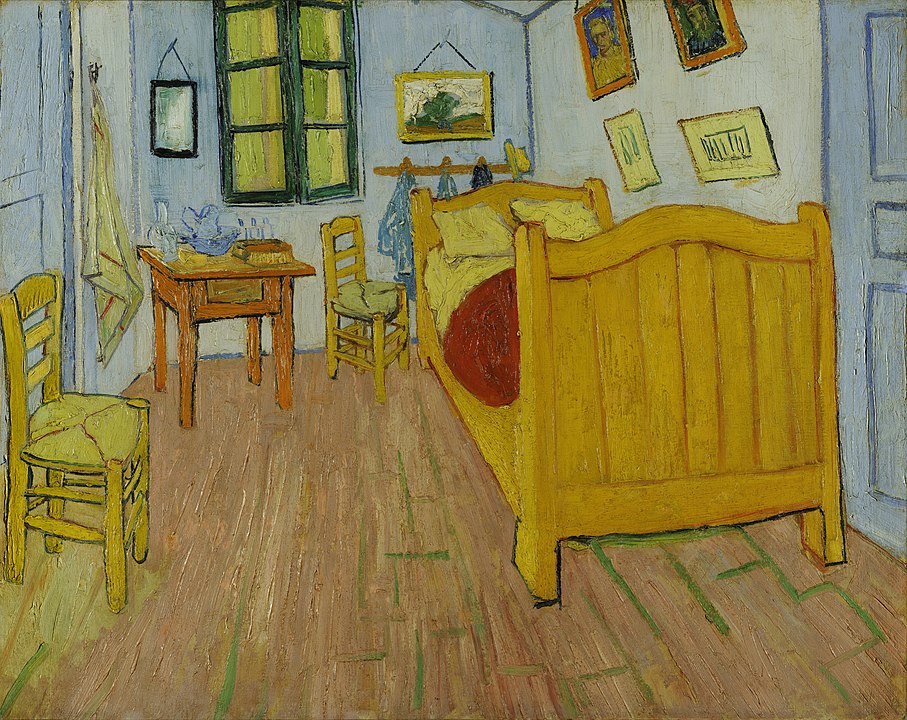
Armchair travel around the world!
Start your reading adventures with our FREE Reading Atlas.

- Around the World in 14 Books
- 7 Thrilling Book Series
- 6 Audiobooks That Are Like Theater For Your Ears



To say that the Dutch post-Impressionist painter Vincent Van Gogh was a sensitive fellow is an understatement. See: his emotion-filled paintings, predilection for ladies of the night, and that whole ear-cutting thing.
But it’s hard to find fault with his decision to leave cold, gray Paris in February 1888 for the golden sun and green fields of Arles in the South of France. In the fourteen months he spent in its warmer clime, he painted some of his most well-known works — Starry Night over the Rhone, Sunflowers, a handful of self-portraits, and The Yellow House, among others.
He’d meant initially for his stay in Arles to be brief — ‘first to Arles to get his bearings and then probably on to Marseille,’ as he told his brother Theo in a letter. But Arle captured his imagination, and he never went to Marseille.
In a later letter to his brother, he wrote, ‘I am painting with the gusto of a Marseillais eating bouillabaisse.’
By May, Van Gogh had rented the Yellow House, where he made a home and set up a studio. (More on Van Gogh’s life in Arles.)

In October 1888, Van Gogh immortalized his chambers with the painting Bedroom in Arles. With the bright colors, he meant to convey ‘repose’ or ‘sleep,’ and he decorated the room’s walls with his own works. He told his brother Theo all about the painting and included a sketch in a letter dated 16 October. (The word croquis in the letter means sketch.)

My dear Theo —
At last I’m sending you a little croquis to give you at least an idea of the direction the work is taking. Because today I’ve gone back to it.
My eyes are still tired, but anyway I had a new idea in mind, and here’s the croquis of it. No. 30 canvas once again.
This time it’s simply my bedroom, but the colour has to do the job here, and through its being simplified by giving a grander style to things, to be suggestive here of rest or of sleep in general. In short, looking at the painting should rest the mind, or rather, the imagination.
The walls are of a pale violet. The floor — is of red tiles.
The bedstead and the chairs are fresh butter yellow.
he sheet and the pillows very bright lemon green.
The blanket scarlet red.
The window green.
The dressing table orange, the basin blue.
The doors lilac.
And that’s all — nothing in this bedroom, with its shutters closed
The solidity of the furniture should also now express unshakeable repose.
Portraits on the wall, and a mirror and a hand-towel and some clothes.
The frame — as there’s no white in the painting — will be white.
This to take my revenge for the enforced rest that I was obliged to take.
I’ll work on it again all day tomorrow, but you can see how simple the idea is. The shadows and cast shadows are removed; it’s coloured in flat, plain tints like Japanese prints.
It will contrast, for example, with the Tarascon diligence and the night café.
I won’t write to you at length, because I’m going to start very early tomorrow with the fresh morning light, to finish my canvas.
How are your pains? Don’t forget to give me news about them.
I hope you’ll write in the next few days.
One day I’ll do you some croquis of the other rooms as well.
I shake your hand firmly
Ever yours, Vincent
Van Gogh’s works have influenced generations of artists ever since, including the poet Marilyn Chandler McEntyre. Her book The Color of Light includes Van Gogh paintings alongside the poems they inspired.

to keep the eye entertained.
or irises when you can get them.
of light in the roadway.
a brother, someone from Paris.
that lives offers him air.
belated mar.’ ‘New shades come out at first light.’
to help the feet remember the honesties of earth.
Marilyn McEntyre is a writer and former professor of medical humanities, literature, and other writing. She leads retreats and workshops about connecting spirituality, politics, food, healthcare, care for the earth and its creatures, care for language and public discourse, and finding new ways to live together on a planet that needs healing: ‘I hope to keep finding ways to help heal the planet, and don’t think we can do that without imagination, compassion, humility, and a massive paradigm shift.’
Top image courtesy of Cody Board/Unsplash.
Want to keep up with our book-related adventures? Sign up for our newsletter!
Can you help us? If you like this article, share it your friends!
Strong Sense of Place is a website and podcast dedicated to literary travel and books we love. Reading good books increases empathy. Empathy is good for all of us and the amazing world we inhabit.
Strong Sense of Place is a listener-supported podcast. If you like the work we do, you can help make it happen by joining our Patreon! That'll unlock bonus content for you, too — including Mel's secret book reviews and Dave's behind-the-scenes notes for the latest Two Truths and a Lie.
Join our Substack to get our FREE newsletter with podcast updates and behind-the-scenes info — and join in fun chats about books and travel with other lovely readers.

We'll share enough detail to help you decide if a book is for you, but we'll never ruin plot twists or give away the ending.
Content on this site is ©2025 by Smudge Publishing, unless otherwise noted. Peace be with you, person who reads the small type.